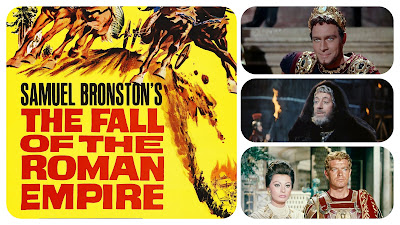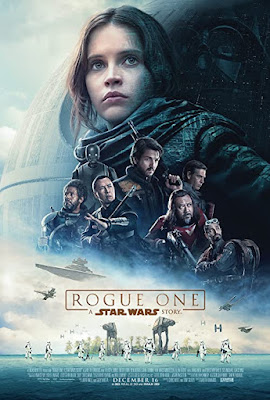Every May the 4th launches the official un-official STAR WARS month; a time for fans (and those who think they are fans) to re-visit the Saga, or at least the parts that they like. These revisitations always lead to endless debate over the best and worst of the long-running franchise, and that leads to Reel Speak’s very first Ranking of the STAR WARS Films.
Ever since STAR WARS exploded onto screens way back in May of 1977, I and legions of fans have been captivated by that far, far away galaxy. While creator George Lucas was changing cinema overnight, he had also changed the lives of kids who had fallen in love for good with a galaxy of aliens, droids, Jedi, and Death Stars. It has been, and still is an elemental force in this Blogger’s life, and this is a blog has been put off for years simply because ranking the films is like picking and choosing your favorite children; we love them all, no matter their faults. STAR WARS may have had its missteps in the last 40-plus years, but here there is a love for them all; with that said, all STAR WARS films have merits.
This is where the fun begins…
11. SOLO (2018)
Only the second film in the franchise’s 40-year history to explore territory outside of the Skywalker family. This Ron Howard-directed flick took the bold step of filling in the backstory of the ever-popular Han Solo; showing his roots as a smuggler, and his acquisition of his best pal Chewbacca and his beloved ship the Millennium Falcon. Lighter and breezier than most STAR WARS films, SOLO doesn’t carry a lot of weight, but it is fun and opens up the underworld of the galaxy.
10. ATTACK OF THE CLONES (2002)
The second film in the Prequel Trilogy which shows the vital steps towards the formation of the evil Galactic Empire, and the eventual downfall of the Jedi and Anakin Skywalker. Despite its aggressive title, ATTACK OF THE CLONES mostly unfolds as a slow-burning mystery; with our heroes trying to uncover who has been behind assassination attempts and shady dealings with consequences for the galaxy. The action is sparce, but when it does come in the last half-hour, it’s full-throttle STAR WARS. And the material here is strong enough to inspire the successful CLONE WARS TV series.
9. REVENGE OF THE SITH (2005)
The third and final installment of the Prequels, which finally shows the fall of Anakin Skywalker and the Jedi, and the rise of Darth Vader and the Empire. The tone is darker than the previous two episodes with heroes dying left and right, and the last 40 minutes range from thrilling to heartbreaking; with Obi-Wan’s final plea of love for his old friend hitting hard.
8. RISE OF SKYWALKER (2019)
The 9th episode in the Saga and final film in the Sequel Trilogy that launched in 2015. Where the previous film, THE LAST JEDI was a slow brooder and deep character dive, RISE went in full-throttle; racing from planet to planet and battle to battle in a near dizzying fashion. The evil Emperor Palpatine is revealed to be the villain in the shadows pulling all the strings, making him the overarching bad-guy for all three trilogies. Not to mention it gives us an emotional, and proper goodbye for our beloved Princess Leia, as played by the late great Carrie Fisher.
7. ROGUE ONE (2016)
The very first film to tell a story un-related to the Skywalker family, with this adventure exploring the characters, conflict, and the Rebel Spies who successfully stole the plans to the dreaded Death Star. Set firmly during the Galactic Civil War, the STAR WARS era that everyone loves the most, ROGUE ONE plays out as a classic WWII film, with an ensemble cast of misfits coming together against impossible odds. It was a story that no one really asked for, but by movie’s end it was the one that we didn’t realize we really needed.
6. THE LAST JEDI (2017)
By the time the second film in the Sequel Trilogy arrived, STAR WARS had been around for 40 years, and we were content thinking that the franchise was same-old, same-old. Thank the maker we were wrong, because this Rian Johnson-directed Episode XIII smashed any and all expectations. Character-driven and done with a palms-up approach to the deconstruction of “heroes” and how we look at them, it showed that STAR WARS could still be full of surprises.
5. THE PHANTOM MENACE (1999)
The first Episode in the saga that relaunched STAR WARS for another generation. Going back decades before the events of the first Death Star, MENACE dove into the early steps of Anakin Skywalker’s path to becoming the evil Darth Vader. Once again clinging to classical storytelling tools, Lucas takes a simple, yet effective approach in reaching new audiences. It ushered in a new era of CGI techniques, is the home to one of John Williams’ best scores, and the place to find the best lightsaber battle ever filmed.
4. RETURN OF THE JEDI (1983)
The finale to the Original Trilogy which wrapped up the threads left dangling in its predecessor; the question of Vader’s claim of parentage, the fate of Han Solo, and a deeper story behind the Skywalker family name. Its magnificent final battle, which is fought and masterfully edited over three different fronts, would set a standard for action films in the years to come.
3. THE FORCE AWAKENS (2015)
The J.J. Abrams directed and Disney produced follow-up to RETURN OF THE JEDI which re-ignited STAR WARS for yet another generation of fans and for the modern era. Set 30 years after the death of Vader, AWAKENS explores the long-term aftermath of the fabled galactic conflict through the eyes of Rey (Daisey Ridley), who would become an icon for female heroes and their fans. High energy, another wonderful score by John Williams, and full of stand-up-and-cheer moments.
2. A NEW HOPE (1977)
The film that forever altered pop culture and the way movies would be created and marketed. Inspired by classic storytelling with clear definitions of good and evil, George Lucas’ very first space epic, originally just titled STAR WARS and given the episodic sub-title A NEW HOPE, introduced us to characters that would be household names for over 40 years and counting; Luke Skywalker, Darth Vader, Han Solo, Chewbacca, Princess Leia…and so much more. With an energetic pace and mythic atmosphere, STAR WARS literally exploded onto the big screen in 1977 and it still works today.
1. THE EMPIRE STRIKES BACK (1980)
How do you follow-up one of the greatest movies of all time? By not going bigger (although it did to that), but by going deeper. The very first STAR WARS sequel upped the scale with some massive battles through ice and snow and thrilling chases through asteroids, but at the same time it brilliantly isolates the characters to provide developing moments. After seeing our heroes win the day in STAR WARS, it was a shock to see them get their butts kicked for nearly an entire film; the bad guys actually win the day this time…all topped off with a whopper of a twist that still echoes after all these years. STAR WARS may have set the template for blockbusters, but EMPIRE set the standard for sequels, and for all of cinema.
REEL SPEAK'S STAR WARS RANKING
- THE EMPIRE STRIKES BACK
- A NEW HOPE
- THE FORCE AWAKENS
- RETURN OF THE JEDI
- THE PHANTOM MENACE
- THE LAST JEDI
- ROGUE ONE
- RISE OF SKYWALKER
- REVENGE OF THE SITH
- ATTACK OF THE CLONES
- SOLO




























